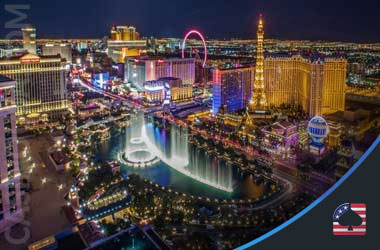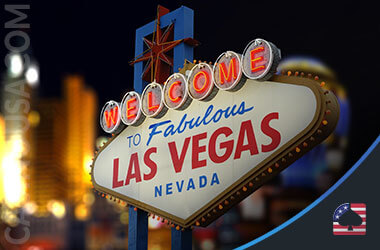
Everyone and their dog has heard of the Las Vegas Strip, but how much do they really know about it and its origins? This iconic part of Sin City has a lengthy and fascinating history and keeps drawing in tourists from different parts of the world.
While Las Vegas is the home to dozens of world-famous casinos, this isn’t all there is to this magnificent city, and the Strip is living proof.
While you may have at least a vague idea of what the Strip looks like with its blinding lights, swarms of pedestrians, and world-famous shows that just keep getting better, this article will cover the ins and outs of the Las Vegas Strip.
You’ll learn all about its history, important landmarks, and maybe even a few juicy stories. This way, you’ll be fully prepared to make your next visit to Sin City unforgettable.
Let’s dive right in!
Brief History of the Las Vegas Strip
Let’s start from the very beginning — its origin story.
According to many sources, the city of Las Vegas first saw the light of day in the 1900s, when the Union Pacific Railroad started going through the area. Its name is of Spanish origin, meaning “the meadows” because of the spring-fed water there.
Las Vegas officially became a city in 1911 and started attracting new settlers in the 1930s because of the famous Hoover Dam. And it was around that time that gambling legalizations in Nevada took place. As you know, the rest is history.
Now back to our topic of interest — the Strip. Once gambling activities became legal, a club in downtown Las Vegas received a temporary license. A stretch of road, primarily known as Highway 91, became the Las Vegas Strip. As the city grew, it became more popular with the tourists, and the Strip started to develop into what it is today.
Steve Wynn was the one who contributed to building its image with the construction of lavish resorts. In the ‘90s, old-style Western venues were demolished to pave the way for newer and shinier hotels and casinos.
- Note: The actual name of the Las Vegas Strip can be credited to an officer from LA McAfee, the new owner of the Pair O’ Dice, the very first casino on the Strip.
Where Is the Las Vegas Strip Located?
As we mentioned, the Strip used to be part of the highway leading people into Las Vegas. It was sort of a pathway for Californians who would visit Fremont Street and try their luck in one of the local casinos. Back then, the bustling Las Vegas Strip was just a piece of barren land you had to pass to get to where the real action was.
As gambling became more popular, various entrepreneurs started building casinos on the highway to lure gamblers into the city, and that is how the Strip started to take on its current form.
The Las Vegas Strip is practically next to McCarran International Airport (now the Harry Reid International), making staying at one of the large resorts such as MGM super convenient.
What Streets Run Along the Las Vegas Strip?
While many people associate the Strip with Las Vegas, technically speaking, the Strip is not actually in Sin City. In fact, the whole area is situated south of the city’s borders in an unincorporated area of Paradise in Nevada.
Some of its parts even wander into Winchester, Nevada. In the strictest sense, the Las Vegas Strip stretches between Russell Road and Sahara Avenue.
What Is Vegas Boulevard?
Now you’ve probably also heard of Las Vegas Boulevard. Is it any different than the Strip?
Well, let us clarify things for you a little bit. The Las Vegas Strip is only a stretch of Las Vegas Boulevard from Sahara north to the MGM Grand Casino south. However, over the years, the Strip has expanded, and we’re sure it will continue to do so for many years to come.
How Big Is the Las Vegas Strip?
The Strip is approximately 4.2 miles long. This most iconic Vegas street starts at the Stratosphere Tower in the north and ends in the south with the MGM Grand. On that stretch of land, many notable resorts and attractions call out to tourists from all over the world.
Some must-see spots include the Welcome to Las Vegas bright neon sign that greets the visitors upon entering. This landmark was designed by Betty Willis in 1959 and has become an invaluable part of Las Vegas history.

No visit to the Strip should go without seeing the spectacular fountains of Bellagio. Picture the most talented ballerinas shaped as water. Impressive, right?
If you’re a movie buff, you’ll probably recognize them right away, as that’s where the Oceans 11 crew celebrated its most successful heist. Of course, every body of water needs its natural adversary — fire. The
Mirage volcano and its so-called eruptions are further accompanied by an effective soundtrack, making for a truly explosive experience.
Nature lovers will have their hands full in the courtyard of the Flamingo Las Vegas, thanks to its 60 exotic birds, 20 turtles, and 300 fish. If you want to escape the hustle and bustle of the ever-busy Strip, this is the place to visit.
Who says you need to go to Italy to experience Venice? The Venetian Canals are right there at your disposal on the Vegas Strip. Take part in gondola rides and make your trip to Sin City memorable. Of course, you can explore plenty of other notable places on the Las Vegas Strip, depending on your interests and how much time you can spare.
What Time Does the Las Vegas Strip Close?
![]() The good news is that you’ll always find a place that’s open 24/7 on the Strip, which is why Vegas is a never-ending source of entertainment. The bad news is that you’ll probably have a sleepless night or two trying to indulge in all the fun.
The good news is that you’ll always find a place that’s open 24/7 on the Strip, which is why Vegas is a never-ending source of entertainment. The bad news is that you’ll probably have a sleepless night or two trying to indulge in all the fun.
Get your beauty sleep at home, and make the most of your visit in Las Vegas. You only live once!

